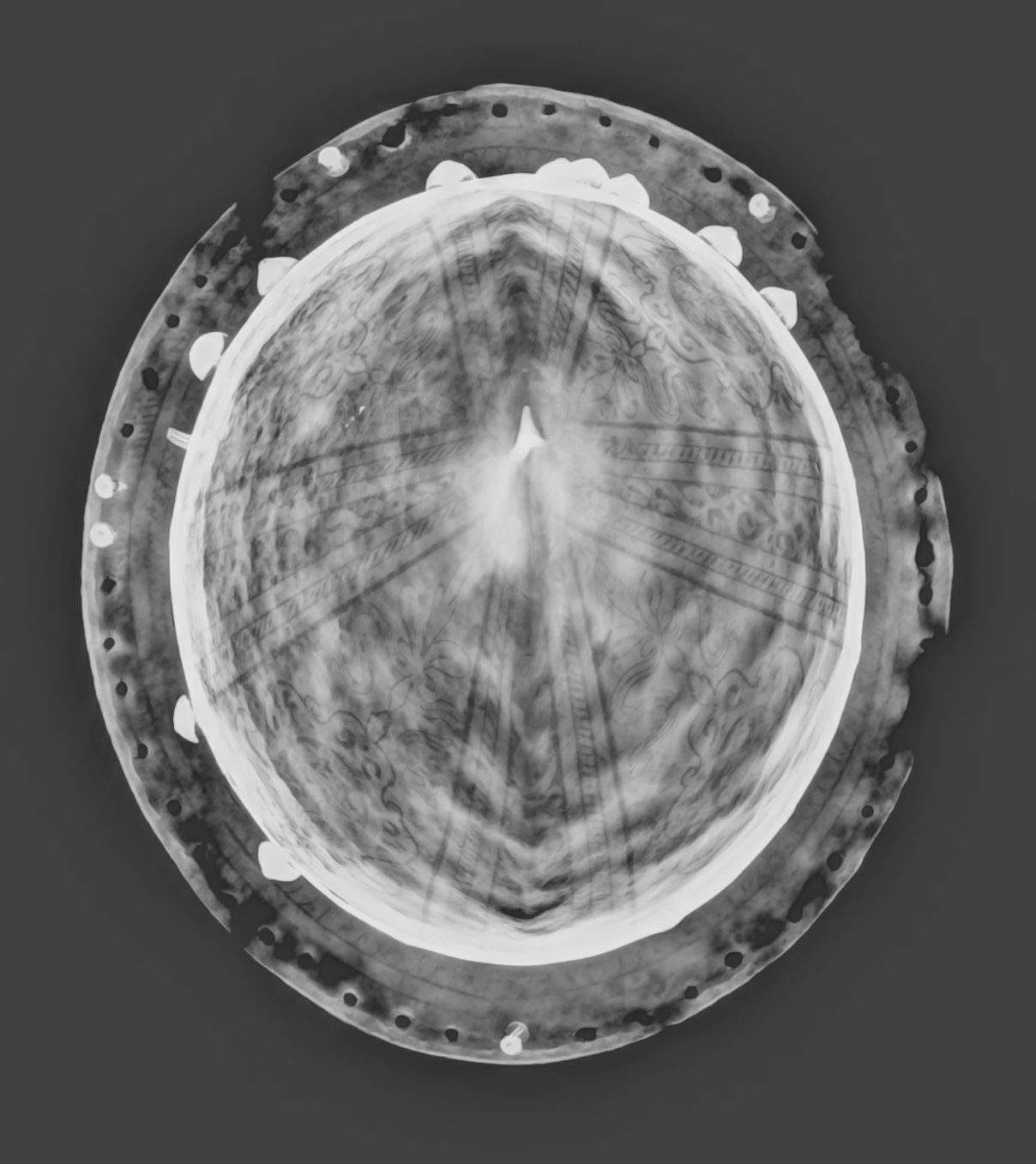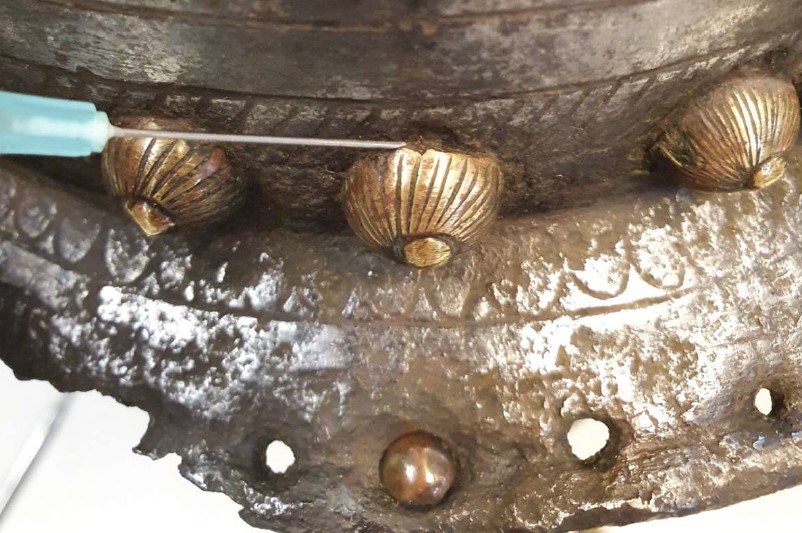Cabasset Helmet
Object

The object is a Cabasset helmet, which forms part of the collections at Kiplin Hall. This object, along with many others, was part of the 1971 bequest to the Kiplin Hall Trust by Bridget Talbot. The donated objects consisted of a collection of objects from various family member’s belongings.
This type of helmet was used by the armies of Europe primarily in the second half of the 16th century. It is an open face style hemlet, consising of a skull piece rising to a longitudinal crested peak, and a brim circling the entirety of the head. The helmet is primarily steel with brass rivets encircling the lower portion of the helmet; the brass rivets likely originally held a textile and / or leather padding in place.

This object is heavily decorated in the Pisan style with a patterned cross design falling from
the crest in decorated columns and separating the body of the helmet into four sections. Within each are figures (possibly angelic Roman soldiers) and floral motifs.
Based on comparative objects, it’s likely this helmet dates to late 16th century Italy. Additionally, the decoration, which would have been applied using acid etching, was heavily utilised by Italian armourers. The open-faced nature of the Cabasset helmet saw it favoured by infantry and light cavalry due to its light weight and wide field of vision. Like most helmets its primary function was to protect the wearer from blows to the head, whether from melee weapons, e.g. swords, or projectiles e.g. arrows and early firearms.
Condition
- There were several areas of iron corrosion on the exterior of the helmet.
- The interior of the helmet was covered in iron corrosion.
- Within the etched decoration, there were remnants of a white substance, which was thought to be polish residue.
Conservation

In order to determine the extent of the iron corrosion on the outer surface, the historic polish residue was removed from the etched decoration using cotton wool swabs with an appropriate solvent. This was deemed appropriate after analysis on the white substance was completed and determined not to be of historic importance.

Following this, the active corrosion on the exterior of the helmet was removed using mechanical methods along with a lubricant to minimise the risk of scratching. However, certain areas of corrosion were difficult to access, e.g. the areas around the brass rivets. These areas were instead treated with tannic acid so the active corrosion would be converted into a more stable, inactive product.

As there was such a large quantity of iron corrosion on the interior of the helmet, and there were some areas which couldn’t be easily reached, the decision was made to treat it chemically rather than mechanically. Tannic acid was applied to the interior of the helmet in order to convert the active corrosion into a more stable product. This produced an even surface and a uniform colour, with no signs of active corrosion on completion.
The entire helmet was then cleaned using a suitable solvent to remove any lingering lubricant, dirt, or corrosion dust, before being coated with microcrystalline wax, which would act as a protective barrier against the environment.
